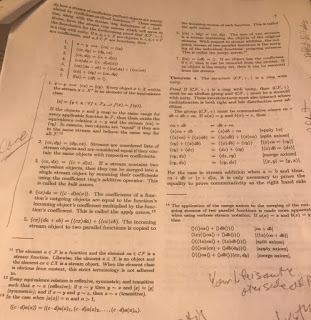https://www.youtube.com/watch?v=iOEHgBL_GmA,
(Phil Trelford - Write your own compiler in 24 hours - Bristech Conference 2015)
https://www.youtube.com/watch?v=OjaAToVkoTw
(How to build a virtual machine)
In the Science of Functional Programming, section on AST.
Here are the mm-ADT docs:
https://www.mm-adt.org/vm/
Edit::
https://www.meetup.com/Category-Theory/events/vmkkjrybckbkb/
(a presentation about mm-ADT is here.)
(Phil Trelford - Write your own compiler in 24 hours - Bristech Conference 2015)
https://www.youtube.com/watch?v=OjaAToVkoTw
(How to build a virtual machine)
I
am also having to spend a lot of time with the data structures book.
https://www.youtube.com/watch?v=eF9qWbuQLuw
(Parser and Lexer — How to Create a Compiler part 1/5 — Converting text into an Abstract Syntax Tree)
https://www.youtube.com/watch?v=eF9qWbuQLuw
(Parser and Lexer — How to Create a Compiler part 1/5 — Converting text into an Abstract Syntax Tree)
In the Science of Functional Programming, section on AST.
Here are the mm-ADT docs:
https://www.mm-adt.org/vm/
Edit::
https://www.meetup.com/Category-Theory/events/vmkkjrybckbkb/
(a presentation about mm-ADT is here.)
